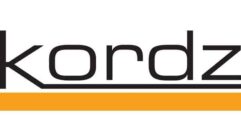Homeward Bound
At least one-third of Pro AV readers are involved with the residential AV market on a regular basis; it’s a consistent finding in the various polls and surveys that we conduct.
At least one-third of Pro AV readers are involved with the residential AV market on a regular basis; it’s a consistent finding in the various polls and surveys that we conduct. We highlighted this trend in our August 2003 feature article, “10 Reasons You Shouldn’t Get Into Residential AV.” Our point back then, and it remains today, is that residential AV projects are different and that understanding the market differences is critical to success.
Branching out into the residential market seems like an obvious consideration for many pro AV system integrators. After all, the projects are nearly identical (except for higher price tags and highly aesthetic finishes), and the budgets for home AV installations can be staggering. What pro AV integrators wouldn’t succumb to the temptation when the CEO whose boardroom you just finished asks you to take a look at the new “media room” in his home?
It’s no surprise, then, that we’ve seen a fairly consistent trend of commercial integrators moving toward residential or “custom electronics” installs. It’s also no surprise that home installers can be rather protective of their turf; some can be downright antagonistic in their attempts to discourage pro/commercial integrators from moving into residential. What is surprising is that we don’t see it going the other way — home installers rarely move into commercial projects. Clearly, these are two very different markets, requiring different expertise, despite the outward similarity of products and systems.
Should a pro AV integrator do business in the residential AV market? Despite the business model variations, this market can fluctuate with the ups and downs of the housing market. Increasingly, success in this market depends on new residential construction; 1.8 million new homes were built in 2006, many of them (87 percent) with structured cabling for home technology. And clearly, home theaters and media rooms are among the most desired features in new- and existing-home sales. Building relationships with home builders can be an essential part of a successful strategy; it’s why Pro AV’s sister publication Hanley Wood’s Digital Home has become a useful tool for integrators pursuing this market.
Timing may be everything, however. It’s no secret that the housing market is in a slump. In 2006, housing starts (new construction projects) fell 12 percent, and sales of new single-family homes dropped an astounding 16.4 percent over 2005 figures. But a down market may be just the right time to develop expertise and gear up for the next upturn in the home market.
Mark Mayfield, Editor










